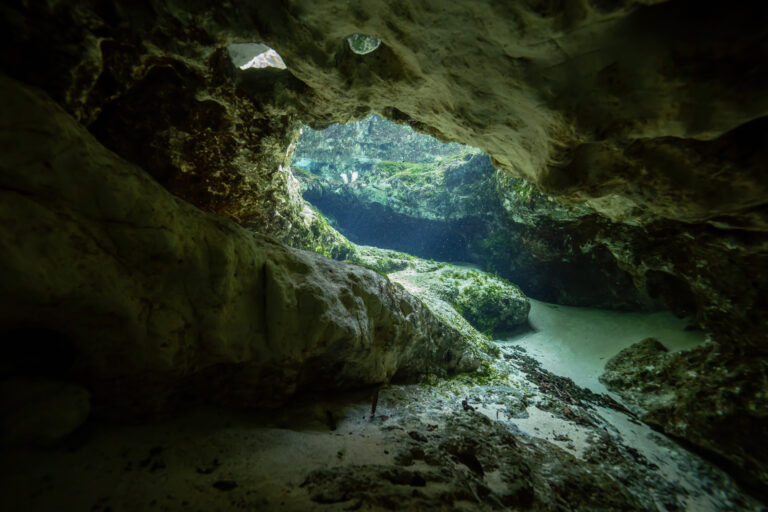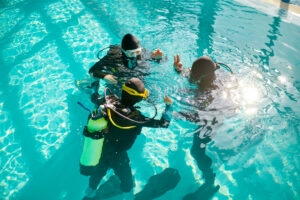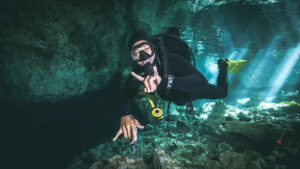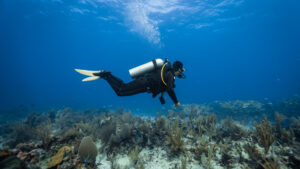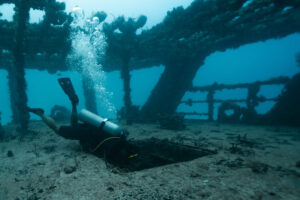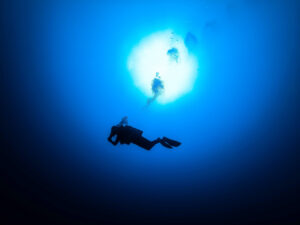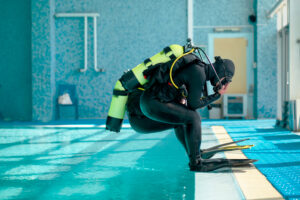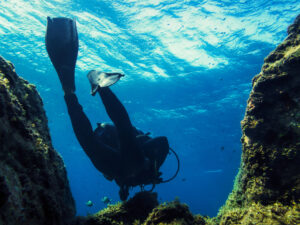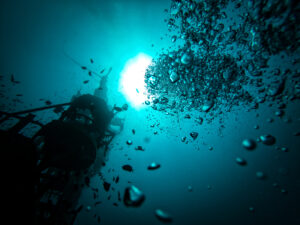What is an Underwater Cave?
Cave diving is a specialized form of scuba diving that involves the exploration of submerged natural underground formations known as caves. These underwater caves are unique ecosystems that present divers with a challenging and thrilling environment. The term “cave” typically refers to a hollow place in the ground formed by natural processes, and in the context of scuba diving, it denotes an underwater environment with overhead rock formations that often extend deep into the Earth.
Formation and Types of Underwater Caves
Underwater caves are formed by various geological processes, including erosion, dissolution, and volcanic activity. The most common type of underwater cave is the solution cave, which forms as a result of the dissolution of soluble rock, primarily limestone, by the action of water. Over thousands to millions of years, the continuous action of water dissolves the rock, creating cavities and passageways that can eventually become submerged.
Other types of underwater caves include lava tubes, which are created by volcanic activity, and talus caves, formed by the collapse of loose rock and debris. The varying formations of these underwater caves contribute to the diverse and complex environments that cave divers encounter.
Significance and Appeal of Cave Diving
Cave diving is an exciting and rewarding pursuit for many reasons. These unique environments offer a window into the past, providing invaluable insights into the geological history of the Earth. The caves often harbor rare and unusual flora and fauna, some of which are only found in these specialized ecosystems. For many divers, the challenge of navigating the intricate passageways and the sense of adventure associated with exploring these mysterious realms are significant motivators.
The beauty and allure of underwater caves are enhanced by the interplay of light and water, which creates mesmerizing visual effects. Stalactites, stalagmites, and other mineral formations add to the appeal, offering divers an opportunity to witness the delicate artistry of nature up close.
Training and Safety Considerations
Cave diving is inherently more hazardous than open water diving due to the potential for disorientation, limited visibility, and the presence of overhead environments that can make a direct ascent to the surface impossible. Consequently, specialized training and equipment are required to ensure the safety of cave divers.
Cave diving certification programs emphasize the importance of proper buoyancy control, line-laying techniques, gas management, and communication skills. Divers also learn to navigate the unique challenges posed by silt-outs, equipment failure, and air-sharing scenarios in confined spaces.
Equipment for cave diving typically includes redundant air supplies, multiple light sources, guideline reels, and specialized dive computers. These items are essential to minimize the risks associated with this demanding form of diving.
Conservation and Environmental Concerns
The fragile ecosystems of underwater caves are susceptible to human impact, and responsible cave diving practices are essential to minimize damage. Cave divers are urged to adhere to the “leave no trace” principle, which includes avoiding contact with delicate formations, minimizing the use of artificial light, and properly managing waste.
Efforts to preserve and protect underwater caves have led to the establishment of designated protected areas and strict regulations governing cave diving activities. In some regions, cave diving is limited to certified individuals or guided tours, ensuring the long-term conservation of these unique environments.
Cave Diving Expeditions and Scientific Research
Cave diving has played a crucial role in the exploration and documentation of underwater caves, contributing to our understanding of these unique environments. The discipline has been instrumental in mapping previously uncharted cave systems, collecting data on water quality, and studying the unique biological communities that inhabit these spaces.
In addition to its recreational appeal, cave diving has a strong connection to scientific research and exploration. Many cave diving expeditions have led to the discovery of new species, the recovery of ancient artifacts, and a deeper understanding of the Earth’s geological history.
The Future of Cave Diving
As technology advances and new diving techniques are developed, the world of cave diving continues to evolve. The increasing accessibility of rebreather technology, which allows divers to stay underwater for extended periods, is expected to push the boundaries of exploration even further. The use of underwater mapping and imaging technology is also enabling more accurate documentation of these complex environments, contributing to our understanding of their ecological and geological significance.
Key Takeaways
Cave diving is a fascinating and challenging pursuit that offers divers the opportunity to explore the hidden wonders of underwater caves. With proper training, equipment, and respect for the environment, cave divers can experience the beauty and mystery of these unique ecosystems, while contributing to our collective knowledge of the natural world. As we continue to learn more about these submerged underground formations, cave diving will remain an essential tool for exploration, conservation, and scientific research.

